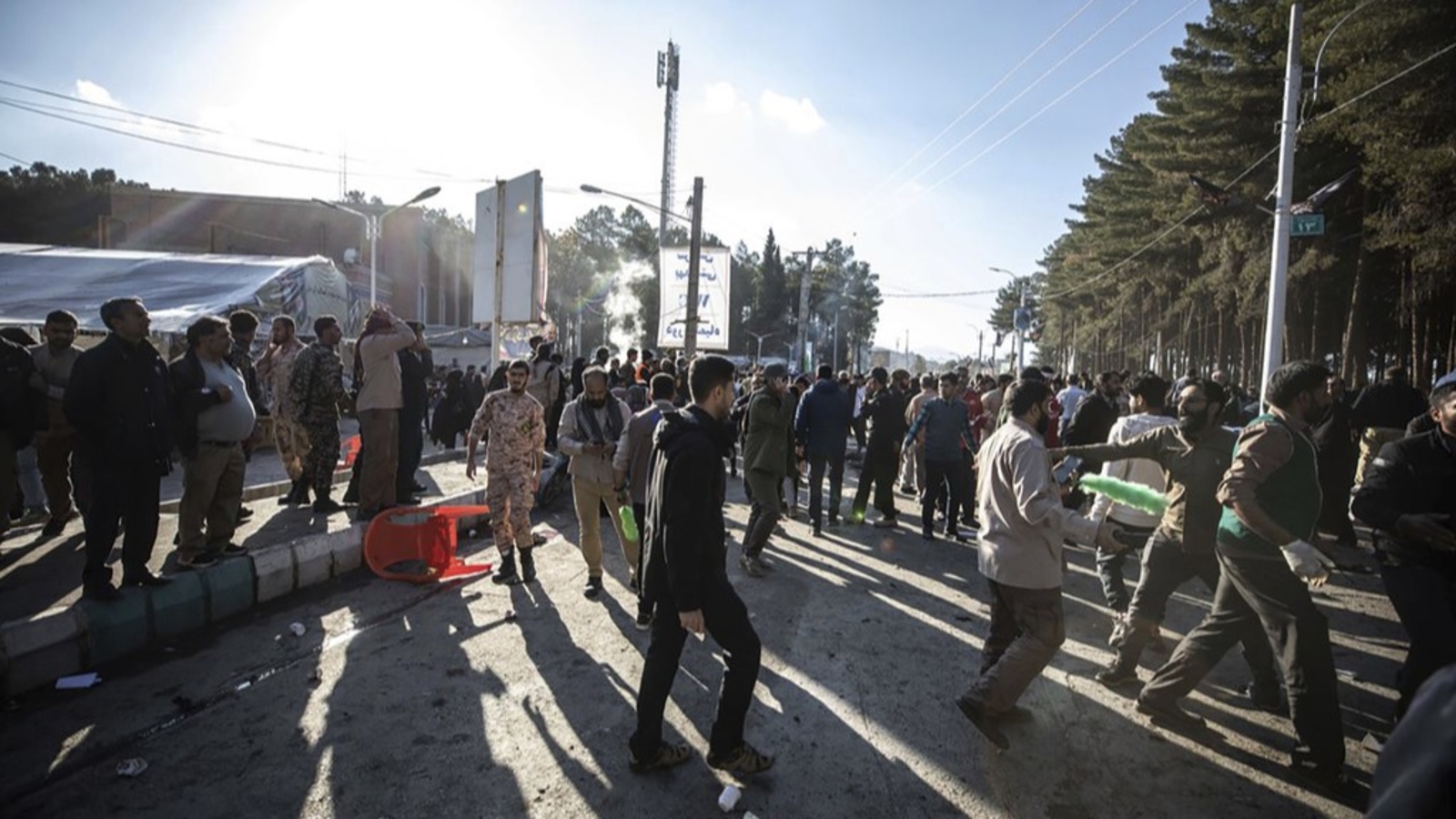In a heart-wrenching incident near the shrine of Qassem Soleimani in Kerman, a city in southeastern Iran, the death toll has surged to over 103, accompanied by reports of 150 injuries. According to the Iranian News Agency, an informed source disclosed that the twin explosions were the outcome of the remote detonation of two devices.
The devastating event prompted Iran to declare a national mourning day, acknowledging the gravity of the situation. The explosions occurred during a ceremony near the tomb of the former Islamic Revolutionary Guard Corps commander, Qassem Soleimani, intensifying the impact on the nation.
Details Unfold: Remote Detonation and Perpetrators
Iranian state media, including Tasnim news agency, reported that “two bags carrying bombs went off” at the site. The agency quoted unnamed sources stating that the “perpetrators… of this incident detonated the bombs by remote control.” The absence of a group claiming responsibility for the explosions has deepened the mystery surrounding the tragic incident. However, many have opined that Israel may have been behind the attack to escalate tensions in the region.
Tehran’s Internal and External Challenges
Tehran grapples with adversaries both internally and externally. Israel has faced accusations of conducting drone strikes on Iranian military facilities in the past. Additionally, Sunni extremist groups, such as the Islamic State, have targeted Iran with bombings, often aimed at civilian populations in the predominantly Shia nation.
The lack of a claim of responsibility further complicates the situation, leaving room for speculation about potential perpetrators. The geopolitical tensions in the region and Iran’s internal dynamics contribute to the complexity of understanding the motives behind such attacks.
Context: Qassem Soleimani’s Legacy and Assassination
The incident near Soleimani’s shrine resurrects memories of his assassination in a US drone strike during a visit to Iraq in 2020. Soleimani, once Iran’s top military general, served in the Islamic Revolutionary Guard Corps (IRGC) and became one of the country’s most prominent commanders.
A national hero to supporters of Iran’s theocratic regime, Soleimani held a position second only to Iran’s supreme leader, Ali Khamenei. As the commander of the Quds Force, a division of the IRGC responsible for external military operations, he played a crucial role in Iran’s regional influence.
Diplomatic Crisis and Retaliation
Soleimani’s assassination led to a major diplomatic crisis between the United States and Iran. Retaliatory rocket strikes against US military sites in Iraq heightened tensions, bringing the two nations to the brink of war. His funeral drew more than a million people to the streets, resulting in a stampede that claimed the lives of 56 mourners.
The Quds Force, under Soleimani’s leadership, was designated a terrorist organization by the United States. The force was accused of orchestrating various activities, including an alleged attempt to assassinate Saudi Arabia’s ambassador to the US in 2011.
Legacy: Mastermind of Iran’s Regional Operations
Soleimani was regarded as the mastermind behind Iran’s military operations in Iraq and Syria. He played a pivotal role in shaping the so-called “Axis of Resistance,” labeled the “Axis of Evil” by Western officials. This coalition involved Iran and Iranian-backed militias, including Lebanon’s Hezbollah and Hamas in Gaza.
As Iran mourns the recent tragedy near Soleimani’s shrine, questions linger about the motives behind the twin explosions and the potential actors involved. The nation faces the challenge of navigating internal and external threats amid the complexity of its geopolitical landscape.
Concerns are mounting over the possibility of escalating tensions in the Middle East, particularly around Israel, as there is apprehension that Hezbollah might respond to the aggression initiated by the Israeli forces.



